Advice
Are flood-damaged cars worth buying?
Flood-damaged cars can be dangerous to drive, yet they still find their way into the used car market. Follow these tips to spot and avoid flooded cars.
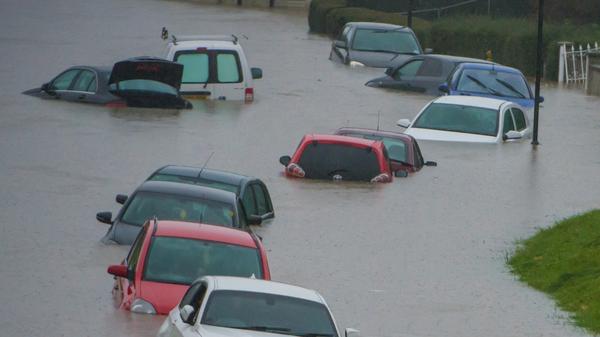

Words by: Lex Kristan
Published on 8 March 2023 | 0 min read
Let’s be honest – Britain isn’t known for its long periods of sunshine and heat. We’re a country prone to floods and wet weather, which means some cars across the UK can be susceptible to damage.
As you might expect, many car buyers have questions about flood-damaged salvage cars; not least of which is whether they should consider buying one. To help you out, we explain how different types of flood damage can affect cars in the UK, so that you can make an informed decision on whether one is right for you.
As you might expect, many car buyers have questions about flood-damaged salvage cars; not least of which is whether they should consider buying one. To help you out, we explain how different types of flood damage can affect cars in the UK, so that you can make an informed decision on whether one is right for you.
How does flood water damage a car?
Water damage can affect cars of all sizes, from small city cars to hefty 4x4s. Common problems with flooded cars can include foul odours, rust, odd noises, engine smoke, and electrical and mechanical components malfunctioning, such as the engine, brakes, starter motors and catalytic converters.
There’s the risk of more serious damage too, including: - Engine failure caused by water damage in the engine. - Malfunction of the car’s filter systems, caused by water contaminating the fuel tank. - Faulty in-car technology, such as electric windows and headlights. - The car’s control systems, such as the ECU or engine control malfunction. Whilst some flooded cars have to be totally written off, others may be resold depending on their damage category. Damaged cars can be separated into categories depending on the level of damage they have suffered, and we explain these categories in detail later in this article. The truth is, any kind of flooding could mean trouble with the car for years to come. But if there’s one thing we know, it’s cars – so here are our tips on how to spot flood damage.
There’s the risk of more serious damage too, including: - Engine failure caused by water damage in the engine. - Malfunction of the car’s filter systems, caused by water contaminating the fuel tank. - Faulty in-car technology, such as electric windows and headlights. - The car’s control systems, such as the ECU or engine control malfunction. Whilst some flooded cars have to be totally written off, others may be resold depending on their damage category. Damaged cars can be separated into categories depending on the level of damage they have suffered, and we explain these categories in detail later in this article. The truth is, any kind of flooding could mean trouble with the car for years to come. But if there’s one thing we know, it’s cars – so here are our tips on how to spot flood damage.
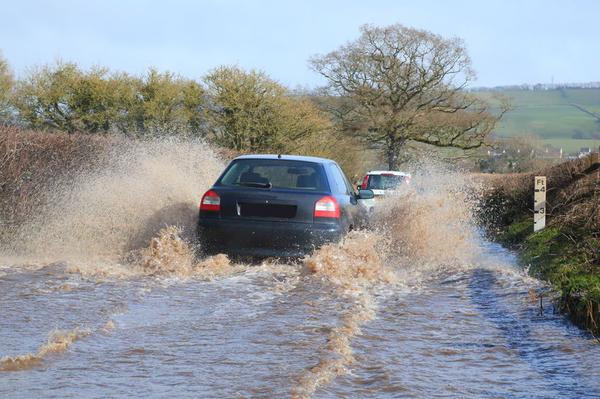
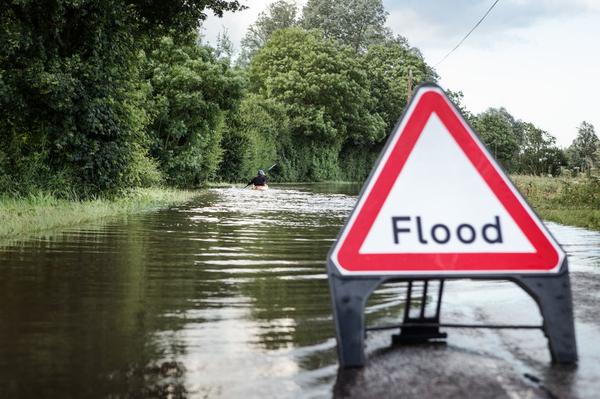
Tips to spot a flood-damaged car
Flooding can affect cars in different ways, so it’s important to know what to look out for to make sure you don’t have any nasty surprises later down the line. These tips will help guide you and give you the confidence to check the car yourself before committing to buying:
1. Get a vehicle check
If you’re unsure about checking the car yourself and would rather a professional check into the history of the vehicle, then consider a Vehicle Check. This will show if a car has ever been written off, which a flood-damaged car could well have been. An Autotrader vehicle check returns a 26-point independent report and comes with up to a £30,000 data guarantee, meaning you can sleep sound with peace of mind.
10,000 vehicle checks are completed every month with Autotrader. You can read more about vehicle checks and what’s covered here.
10,000 vehicle checks are completed every month with Autotrader. You can read more about vehicle checks and what’s covered here.
2. Sniff test
It’s almost impossible to properly dry out a flooded car, and the smell of damp lingers on materials, so have a good nose around for any damp or musty smells. Be wary if you turn up to inspect a car, only to find a window or two open: the seller may be doing that to disguise that tell-tale smell.
3. Check for damp
Certain areas within a car are difficult to dry out completely, for example, in areas like the footwells, the boot, and spare wheel wells, so check any carpets for signs of dampness. They could still be wet to the touch weeks or months after the car was flooded. You may even be able to spot a ‘tide mark’ inside the car if the car was submerged for a long time.
Water can also gather in the ventilation system, so as part of your inspection of the car, turn the heating on, and be very wary if the windows start to steam up.
Water can also gather in the ventilation system, so as part of your inspection of the car, turn the heating on, and be very wary if the windows start to steam up.
4. Check for rust
It’s no great secret that metal plus water can equal rust, so have a good look around any car you’re considering buying, particularly on the underside and under the bonnet, for any signs of more rust than you would expect for a car of its age. Water can also wash debris and silt into a car, so keep an eye out for mud, sand and so on in places they shouldn’t be.
5. Check the electrics
Check all the car’s electrical systems, not just the lights. Ensure the audio or infotainment system is in full working order, that there are no warning lights showing on the dashboard when the car is running, and that all the lights and indicators work.
Oh, and while you’re checking the lights, make sure there’s no water trapped inside them. One fault doesn’t mean the car is damaged, but more than one should cause any potential buyer to raise their eyebrows.
Oh, and while you’re checking the lights, make sure there’s no water trapped inside them. One fault doesn’t mean the car is damaged, but more than one should cause any potential buyer to raise their eyebrows.
6. Look at the oil
If a car has been in deep water, there can be tell-tale signs with the oil. Look at the oil under the filler cap and checking the dipstick. If there’s a white, mayonnaise-like deposit there, it means there’s water in the engine, which isn’t a good thing.
Water doesn’t compress, meaning any water inside the combustion chamber can lead to internal damage and hydrolocking (when the engine suffers catastrophic failure due to pistons or connecting rods which are damaged from the flooding).
Water doesn’t compress, meaning any water inside the combustion chamber can lead to internal damage and hydrolocking (when the engine suffers catastrophic failure due to pistons or connecting rods which are damaged from the flooding).
7. Ask the seller about the car’s history
Come with questions prepared so that you can refer to them if needed. If the car has spent some of its life in an area known for flooding, then carry on asking questions to find out if the car was affected.
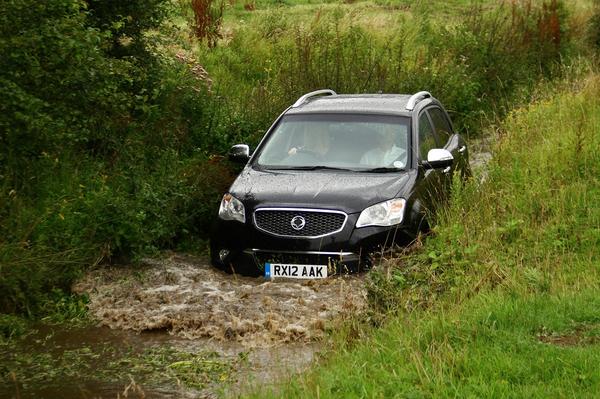
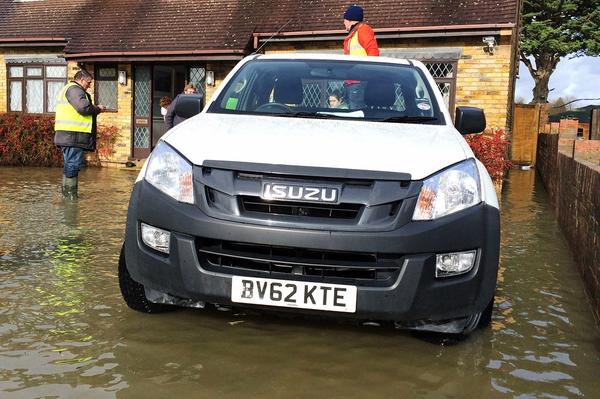
Should I buy a flood-damaged car?
We certainly wouldn’t recommend it, as flood damage can have knock-on effects well into the future. Even if a flood-damaged car seems ok during an inspection or test drive, the damage may have shortened the life expectancy, and quite possibly the effectiveness, of some vital components, such as the brakes or airbags.
If you know what you're doing, what work will need doing, and how much that work will cost, you could take the risk. But if you do, make sure you pay an appropriate price for the car.
If you know what you're doing, what work will need doing, and how much that work will cost, you could take the risk. But if you do, make sure you pay an appropriate price for the car.
Is a flood-damaged car repairable?
Your repair options depend on the extent of the flooding, water type, depth and duration of submersion. If you’re intent on buying a flood-damaged car to restore it, check with a professional first to ensure restoration is possible.
How high does water have to be to flood a car?
You shouldn’t drive into flood water or flowing water deeper than 10cm (or four inches) unless you’re driving a high-riding SUV. Most modern cars are built water-tight which enables them to float through water that’s as little as 30cm deep, but you shouldn’t take unnecessary risks.
Does car insurance cover flood damage?
Not all types of car insurance will cover flood damage, unfortunately. If you have fully comprehensive cover, you may be able to claim for flood damage, but you should always check the terms and conditions of your policy. You may only be covered if you’ve done what’s necessary to keep your car safe.
Typically, car insurance providers put flood damage into two categories: - Unavoidable flood damage – if your car is flooded where it’s usually parked. For example, at home. - Avoidable flood damage – if you take risks like driving into a flooded area, despite warning alerts. For further information on car insurance for flood-damaged cars, head on over to our insurance hub
Typically, car insurance providers put flood damage into two categories: - Unavoidable flood damage – if your car is flooded where it’s usually parked. For example, at home. - Avoidable flood damage – if you take risks like driving into a flooded area, despite warning alerts. For further information on car insurance for flood-damaged cars, head on over to our insurance hub
Car damage categories
What category is a flood-damaged car?
Cat A – Category A cars are deemed too dangerous to return to the roads. Due to the severity of the damage, even parts cannot be removed for reuse. These cars have usually been fully submerged for a period of time. Cat B – Similar to Cat A cars, category B cars are also illegal to put back on the road, plus the car’s body must be scrapped too. However, parts from a category B car can be removed for reuse or resale before scrapping. Category B cars have typically suffered water ingress resulting in compromised mechanical or electrical safety. Cat S - Formerly known as Category C cars, Category S stands for structural damage. Flood-damaged cars are unlikely to be classified within this category unless they’ve suffered some form of physical impact alongside flooding. Cat N - Formerly known as Category D cars, Category N stands for non-structural damage. These cars are deemed uneconomical to repair (as the cost of repair would be more than their total value), however, Category N cars can be repaired and given a new life on the road. Category N flood-damaged cars will need some professional love and care before they can be properly relied upon. For this reason, it’s more common for professional mechanics to buy flood-damaged cars than first-time buyers. Whilst sellers of Category N cars should be upfront about what occurred for the car to be written off, and should be explicit about the level of damage, the final responsibility lies with the buyer meaning it’s on you if the purchase doesn’t work out. You can find more information on car damage categories here.
Cat A – Category A cars are deemed too dangerous to return to the roads. Due to the severity of the damage, even parts cannot be removed for reuse. These cars have usually been fully submerged for a period of time. Cat B – Similar to Cat A cars, category B cars are also illegal to put back on the road, plus the car’s body must be scrapped too. However, parts from a category B car can be removed for reuse or resale before scrapping. Category B cars have typically suffered water ingress resulting in compromised mechanical or electrical safety. Cat S - Formerly known as Category C cars, Category S stands for structural damage. Flood-damaged cars are unlikely to be classified within this category unless they’ve suffered some form of physical impact alongside flooding. Cat N - Formerly known as Category D cars, Category N stands for non-structural damage. These cars are deemed uneconomical to repair (as the cost of repair would be more than their total value), however, Category N cars can be repaired and given a new life on the road. Category N flood-damaged cars will need some professional love and care before they can be properly relied upon. For this reason, it’s more common for professional mechanics to buy flood-damaged cars than first-time buyers. Whilst sellers of Category N cars should be upfront about what occurred for the car to be written off, and should be explicit about the level of damage, the final responsibility lies with the buyer meaning it’s on you if the purchase doesn’t work out. You can find more information on car damage categories here.